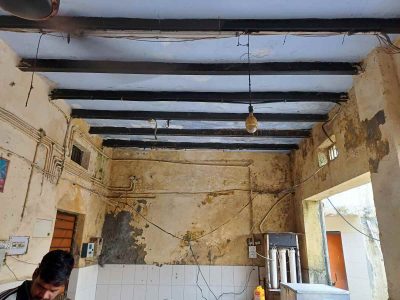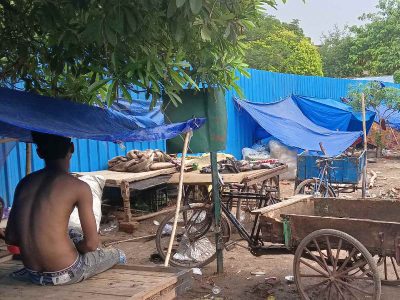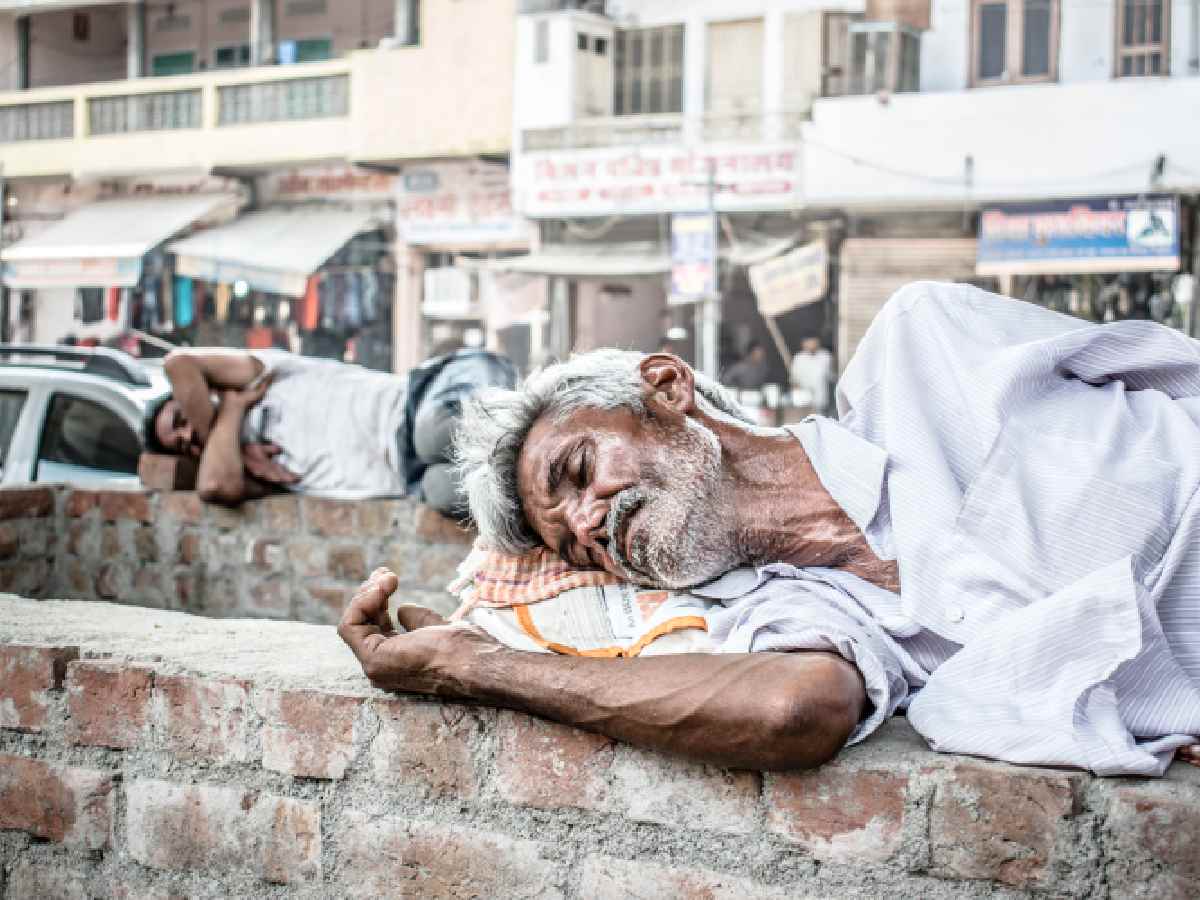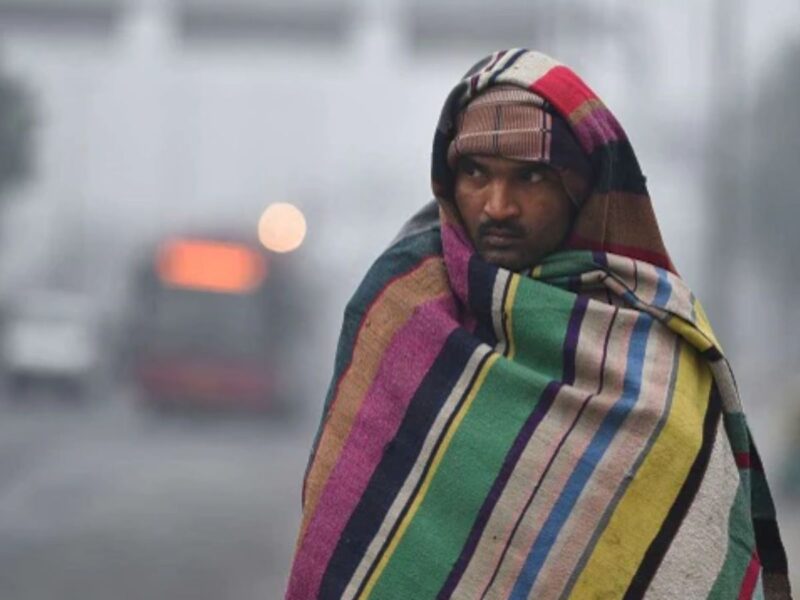by Kushan Niyogi/Srishti Chatterjee
As the World Population Day knocked on the door on Thursday, a significant part of the national capital was swathed by rainfall which, according to the authorities, left behind 308 waterlogging spots and severely affected the homeless in Delhi’s 343 night shelters.
At a maximum capacity of 290, the night shelter at Asaf Ali Road near Police Bhawan, is filled to the brim on most days with the last occupancy report suggesting that 314 people had taken refuge inside.
The shelter is only for men and some of them are accompanied by their children. To put matters into perspective, it had been set up in the early years of the last decade to provide refuge to the homeless looking for a place to rest their head under.
However, with the population rising in Delhi, the needs of the homeless have taken a backseat.
“Although the Occupancy Report says that we have a maximum capacity of 290, I can positively say that there is space for only 115 people, if we consider only the number of beds. Technically, according to the Delhi Urban Shelter Improvement Board (DUSIB), we are supposed to take in people only if we have the bed to support them and follow the one bed per person mandate. However, every day we are getting around 300 entries and most of them have to sleep on the ground because we do not have enough resources,” said Ravikant, the supervisor.
Many of the residents have started calling the courtyard area their home as space within the shelter decreases by the day. Lying on the ground, sprawled across, the residents cannot help but rest right under the ceiling fans in the outdoor area.
“We do not have enough space inside. However, in the day time, they mostly sleep outside to escape the heat inside the rooms since the rooms have sparse ventilation.”
Also Read: Delhi: Displaced Yamuna farmers scramble for shelter
On the other hand, as it poured heavily across the national capital, the inflow of the homeless also increased considerably inside the shelter.
“It was still manageable earlier, because in summers the homeless would rather stay outside and come only in the day time to take temporary refuge here. However, with the onset of the monsoon season, the inflow of the homeless has greatly increased and there is no chance of it reducing any time soon,” he said.
A resident complained that due to the rain, the drains also get clogged up turning the entire courtyard into a space for mosquito breeding, which can give rise to diseases such as dengue and malaria.
“The sewer lines are all dead. We have to clear up the clogged drains by ourselves manually since there is no way for the water to seep out,” he said.
Sophia, the NGO that looks after several night shelters including the one at Asaf Ali Road, is presently conducting a survey of the homeless in Delhi to ascertain the actual number.

“According to the Delhi government, the total number of homeless is 19,000. We have just started the survey and in a single cluster we have noted over two lakh homeless. This is fairly ridiculous,” he said.
Similar scenes can be witnessed at the night shelter for men near the Old Delhi Railway Station where the maximum capacity is 450 according to the Occupancy Report.
However, according to the caretaker, Chandan Kumar Mishra, there are only 250 beds. Moreover, according to the report from July 10 night, the number of inmates then were 255 though according to the caretaker, around 600 residents were staying inside the shelter.
“It is raining outside and there is no point in denying other homeless people a place to stay. Honestly, most of the people who stay here are all technically permanent. They have been staying for over a year or two, while some have been living here for over a decade. I cannot just ask them to stay outside and not offer them a place to sleep in,” Mishra said.
According to Rahul Jatav, a resident, water gets collected along the cramped corridor owing to waterlogging on the street which eventually leads to the drains getting clogged up.
“Normally, all of us take turns to clean the drain or drain the water out manually. However, when it rains at night, the water sometimes stays till morning which leads to it turning into a breeding spot for some time. We remain scared of contracting some disease or the other,” he said.
Jama Masjid’s night shelter for women, on the other hand, is witness to a plethora of problems. With the shelter not having enough space for more people inside, many have elected to set up tarpaulin and a charpoy right outside. Sprawled across the field, the homeless trust being outside more than inside.

“There is not enough food to go around as it is. I know that the moment we enter, we will become second class citizens and not get a share of the resources,” said Devi, who has been staying outside for the past six years.
With the onset of monsoon, the roofs of both the shelters have started leaking, as the residents wait in fear for the ceiling to give away.
“The ceiling begins to leak every time it rains. It is only a matter of time before it collapses,” said Khushnaaz, one of the residents.
A similar sight was seen in the night shelter near Police Bhawan, where the building stood. Renovated decades ago, the building is now home to a massive spread of dampness in walls, with it being effectively soft to the touch.
Similarly, at Jama Masjid’s shelter, water has started accumulating in the courtyard, after the breaking of a tap, making it a possible hub for breeding which may affect the many children who stay there.
“It has been broken for the past two months. It was not as bad. However, the slight advent of rain pushes the entire courtyard to the brink of waterlogging making it very difficult for children to go outside or even stay inside. It also makes it a breeding ground,” said Reema, the caretaker.
The lack of toilets is the most severe problem bothering the residents.
At Jama Masjid’s night shelter, there are seven toilets of which only two work. The toilets have become a haven for disease causing viruses for the 100-odd residents who live inside the shelter meant for 50 inmates. On the other hand, the men at Asaf Ali Road have only been given five toilets and three bathing spaces. Around 300 residents use the seven bathroom spaces daily at night.
“We have asked the DUSIB to build more spaces but this has been going on for some time and all of our pleas fall on deaf ears. The fact of the matter is that the government itself does not know that Delhi does not have only 19,000 homeless people. It has much more,” said Ravikant, who is in charge of 25 shelters under Sophia’s banner.
The washroom’s roof at the Motia Khan night shelter collapsed recently due to rain, according to him. However, no casualty was reported.





